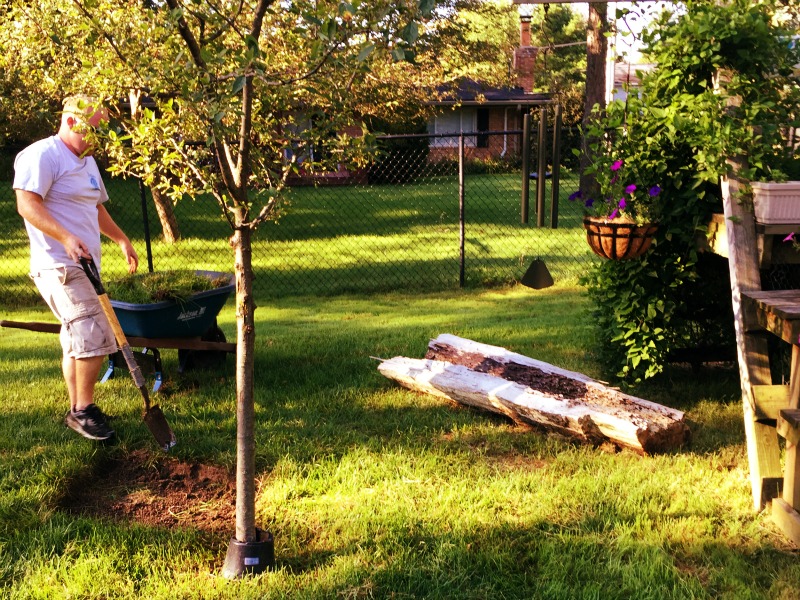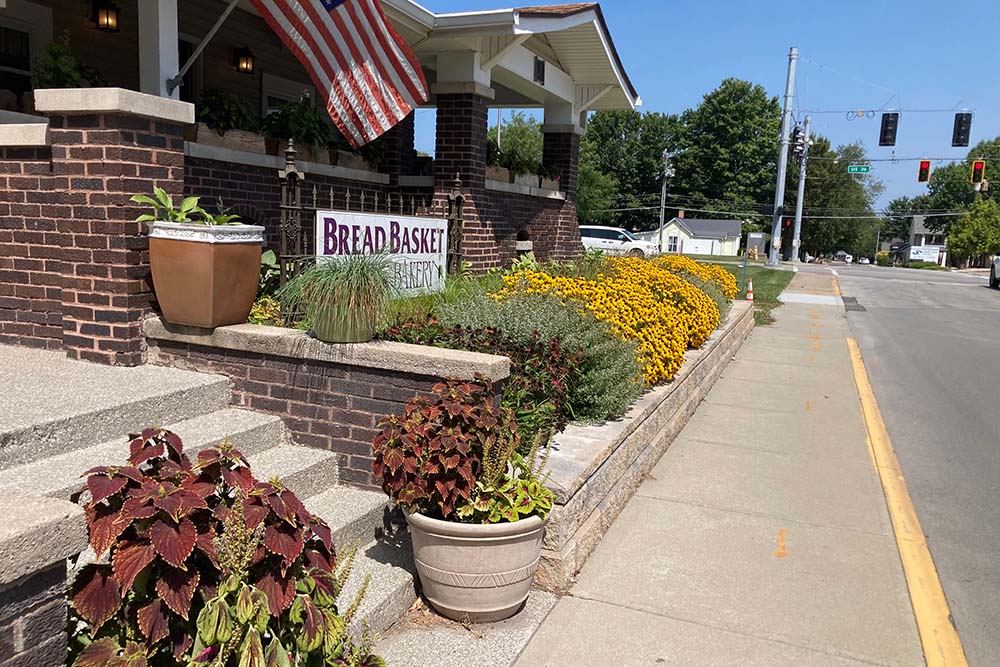Did you know that fall is a good time to plant trees? The milder temperatures are gentler on plants and there is usually rain to keep the newly transplanted hydrated. In some cases, trees come out of the ground better in the fall, so moving them from a nursery to your landscape puts less stress on them. In the spring, trees are actively putting out blossoms and leaves, so it is better to disturb their root system in the fall when they are thinking about going to sleep. We have some tips for you do-it-yourselfers who are thinking of adding trees to your landscape this fall:
Fall Planting Tips
1) Before you plant, you will want to check that your tree has a healthy root ball. You can take the tree out of its pot for a look. If the roots are healthy, they will cling to the dirt. However, if lots of dirt falls off the roots, it may be a sign that the roots are rotten. You want the soil around the roots to be moist, but not soaking; letting roots sit in water promotes mold. A reputable nursery or landscaper will give you a warranty on your tree, so you can return it if it ends up not flourishing by next fall.
2) The hole you dig to plant your tree needs to be bigger than the ball. If you have a one-foot root ball, make the hole two to three feet across. Also, create a hole in the shape of a dish, not a flat rectangle. Roots need loose soil to spread in, so make sure there is plenty of loose soil around and under the root ball. Indiana’s soil has a high content of hard clay, so it is important to break up the soil for the roots.
3) Spread 14-14-14 fertilizer in the bottom of the hole and mix it into the soil. You do not want the roots to touch the fertilizer directly, so mix well!
4) Before placing the tree into the hole, comb around the edges of the root ball with your fingers to encourage the roots to spread out instead of growing in the form of the pot.
5) Don’t plant too deep or too high. If the tree’s trunk and roots are too deep, the tree suffocates and starts to grow upper roots, which absorb all the moisture and prevent the lower roots from getting water. The result is an unhealthy tree. If you plant too high, there are not enough roots in the ground and they cannot do their job. The result is a dead tree. Usually, though it depends upon the tree, we plant one to two inches above ground level, enough to let the tree breath.
6) When you add the soil back in around the tree, you want it to be loose and non-compact, but also not filled with air pockets. Watering while replacing the dirt can help settle the soil into place. However, make sure to not overwater! Add only enough so when you stick your finger into the soil it is wet for two to three inches.
7) If you are planting a large tree, consider using stakes to help it grow straight. We suggest using three support points. Do not wrap wire directly on bark; put something between them like cloth or hose. Secure one wire at a time, pulling the wire taut at the end, then moving on to the next stake. Think about how the wind could affect your tree as well, making sure to compensate for that extra push toward one growth direction.
8) Stand back and admire a job well done! Make sure to let the tree go to sleep but do keep an eye on it through the growing season, particularly later in the year when the energy it stored at the nursery is gone. Unhealthy trees tend to show their true colors once they have to begin flourishing on their own.
There is a lot to know about planting trees, and like any gardening, it can take time and practice to perfect. Research and another experienced gardener or landscaper are your greatest tools, so remember to use them! Feel free to send us questions via email, or leave a comment below.






